
A varnish is simply a combination of a resin and a drying oil, and one of the simplest kinds of varnish can be made from linseed oil and pine rosin. In their raw forms, these materials produce a poor varnish, which dries slowly and softens easily; however, if the linseed oil is boiled, and the pine rosin is hardened by a similar process, a useful varnish can be made. Since I had already prepared boiled linseed oil earlier, the next step was to prepare the resin component of the varnish.
I began by adding 100g of pine rosin to my large glass dish; I then used my hot plate to melt the rosin, at which point I immediately added 400mg of ferric acetate, which I had previously ground to a paste in a small amount of turpentine. I then let the temperature rise to 220°C, where I maintained it for four hours with occasional stirring. The rosin slowly thickened, and by the end of the heating period it had become considerably viscous, especially around the edges. The ferric acetate catalyzes this process; without it, I found it takes 12 hours to achieve an equivalent product. I then removed the dish from the heat; as it cooled, I monitored the temperature while occasionally prodding the surface of the resin, and found that it fully solidified between 80°C and 90°C, which is 30°C higher than the softening point of the raw pine rosin. Shortly thereafter, the brittle resin cracked violently and separated from the glass dish, facilitating easy removal. Once it had fully cooled, I transfered the flakes of resin to a small mason jar. These steps can be seen below.
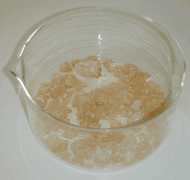
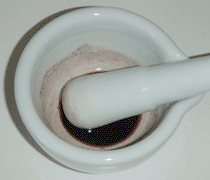
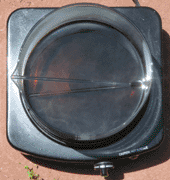
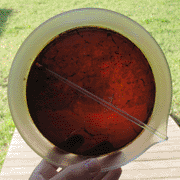
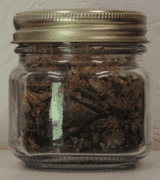
With the oil and resin prepared separately, making the varnish was trivial. I simply added boiled linseed oil and hardened pine rosin to a mason jar in a 1:1 ratio by weight, then added an equal amount of turpentine to dissolve both ingredients and allow them to mix. I then heated and stirred the mixture until it was homogeneous, then let it cool. Next, I prepared a number of test boards by cutting them to length and planing one surface, then sealing them with gelatine. Finally, once the sealer had dried, I painted on a thin layer of varnish and brought the boards outside to dry in the sun. The varnish was tack-free after two hours, and had substantially hardened two hours after that.
This varnish appears to be suitable for general purpose use, with two minor issues which stem from the characteristics of the pine rosin. The first is that the varnish will turn white if continually soaked in water, only partially recovering its gloss when allowed to dry. It is not water-soluble, but instead the surface is likely broken up by some sort of emulsifying action. The second issue is that the varnish retains the high friction of its rosin base, causing skidding rather than sliding when the hand runs across it. Fortunately, I have encountered these same issues in the past with shellac, and the solution in both cases is to simply apply a wax or a non-drying oil to the surface after varnishing. With those issues resolved, this varnish could potentially become my primary coating for projects requiring a smooth finish, as it produces a level of gloss in one coat that is equivalent to roughly five coats of shellac. Using it for this purpose will also provide useful information regarding its long-term durability, which at this point is essentially unknown. Overall, though, I am pleased with the results so far.
Although this varnish has been superseded by its tung oil variant, I found via experimentation that the hardened rosin described above can be used as a direct substitute for garnet shellac. It dissolves readily in ethanol, and this solution has identical properties to its shellac equivalent; it has the same viscosity, tackiness, and even the same smell. The only difference is that after drying, the hardened rosin is more easily scratched, and is more vulnerable to oil-based solvents. This is justified by the cost, however, which is roughly 1/4 that of shellac. Since I have genuine shellac available it is unlikely that I will use this in projects, but I found the comparison to be interesting, and it may even be useful if shellac ever becomes scarce.